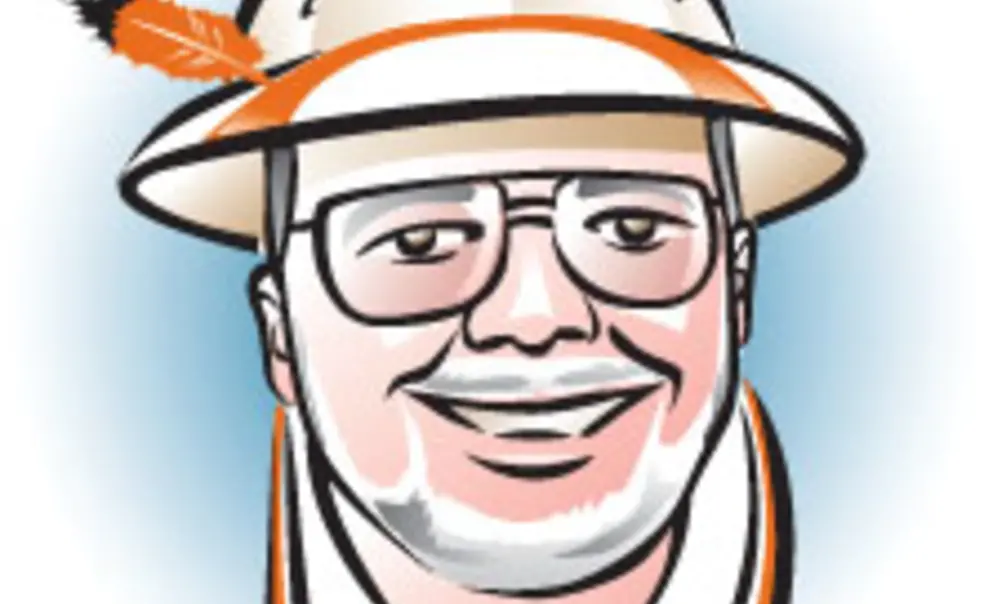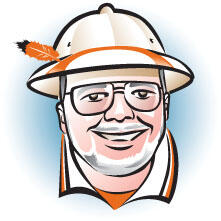Of the peculiar aspects of Princeton that seem to flow naturally through the campus water supply (if not the steam tunnels), leadership in higher education is one of the most long-standing and consistent. Founded only 30 years before the Battle of Princeton, the spunky college by then already had its tendrils out in the academic world, with alumni leading Brown, Hampden-Sydney, and Washington & Lee. More American college expansion would follow after the Revolution, with proto-Tigers involved in the founding of Dickinson, the University of North Carolina, Hobart, Hamilton, Ohio, Union, and on and on.
This tradition of sending academic leaders out into the cold world beyond Nassau Street continues unabated to the present day. Take the 50 percent of the Ivy presidents who aren’t men as a fascinating example. Ruth Simmons of Brown spent 10 years as a Princeton administrator, mentored by Dean Aaron Lemonick *54, before going from vice provost to Smith as its president. Amy Gutmann of Penn taught political science for 28 years at Princeton, rising to provost, which is the single job in higher education you want if you’d like to become a college president; ask Bill Bowen *58 or Neil Rudenstine ’56 (hahvahd) or Sheldon Hackney (Vanderbilt, Penn) or Hugo Sonnenschein (Chicago). Our own Shirley Tilghman spent 15 years at Princeton building first the molecular biology department, then the genomics institute. She, Gutmann, and Simmons all credit president emeritus Harold Shapiro *64 with guiding them in their careers. The last of the current Ivy foursome, Drew Gilpin Faust of Harvard, had a more seminal experience: She’s a Princeton daughter.
Tiger alums of all ages, sexes, and academic interests continue the college presidential pattern with panache. The fascinating PAW feature published Sept. 27, 2006, on some of the current educators-in-chief is highly instructive. Among the seven are scholars from politics, law, classics (a la Bob Goheen ’40 *48!), chemistry, religion, linguistics, and Spanish, running institutions from 1,000 students to 21,000, with locations from New Jersey to California. And the list didn’t even include Chris Thomforde ’69 (Ivy champ basketball captain) of Moravian, the World’s Tallest College President.
But in “the nation’s service and service to all nations” there are two important and unique colleges whose astonishingly strong Princeton traditions seem to stand out both for their longevity and their influence; their stories begin 150 years ago and continue onward to today’s online newsblog.
In the nation’s service and founded by a Presbyterian minister (where have we heard that before?) in 1854, Ashmun Institute outside Philadelphia was the first liberal arts college for blacks in the world. In 1865, Isaac Rendall 1852 was named its president; the following year the name of the college was changed to Lincoln University in honor of the slain U.S. president. For the next 80 years, in unbroken line, Isaac and John Rendall 1870, William Johnson 1888 and Walter Wright 1892 presided over the advancement of an institution that educated 20 percent of the black physicians and 10 percent of the black lawyers in the United States. Its graduates during their tenures included Thurgood Marshall, Monte Irvin, Langston Hughes, Cab Calloway, Kwame Nkrumah, Roscoe Lee Browne, the first African-American members of both the New Jersey and Pennsylvania legislatures, and Rev. William Robeson I and Dr. William Robeson II, Paul Robeson’s father and brother. That this took place at a time when none of the students at Lincoln was allowed to study at their presidents’ alma mater is at once mystifying and deeply inspirational. As the world changed in 1945, Wright turned Lincoln over to Horace Mann Bond, the Lincoln-educated scholar who later provided pivotal research for Brown v. Board of Education, and the father of civil-rights activist Julian Bond.
And in the service of all nations, there is the Syrian Protestant College in Beirut. Founded by an American missionary (here we go again) in 1866 and bankrolled in large part by William E. Dodge of New York, its purpose was straightforward but challenging: to establish a secular college in the Middle East on the American model with a medical school. Members of the philanthropic Dodge family (as in Murray-Dodge and Dodge-Osborn halls at Princeton), including Cleveland Dodge 1879, were major supporters of the school. Cleveland’s son Bayard Dodge 1909 went to Beirut in 1913 to oversee a new building funded by his father’s foundation, and never left. He became president of the now-American University of Beirut in 1923 and served – without salary – for 25 years, while the campus remained an island of enlightenment in an ever-darkening Middle East. His son David Dodge ’45 *49 was born there, and played as a youngster with Malcolm Kerr ’53, whose father was a biochemistry professor.
The two went their separate ways after Deerfield and Princeton, Dodge to Aramco and Kerr to a UCLA professorship, but both remained attached to AUB and eventually joined its board of trustees. When Dodge retired, he took up administrative duties at the school under Harold Hoelscher ’44, who retired as AUB president in 1981. Dodge became interim president while a search was conducted; in March 1982 Kerr was named the new president, effective later in the year. On June 6, Israel invaded Lebanon; on July 19, acting president Dodge was kidnapped on campus by Shiite extremists and held captive for a year. Kerr was still in the United States; with a flourishing career at UCLA, rethinking his decision to return to Beirut might have seemed the reasonable thing to do. He went anyway, in September. In Dodge’s words (PAW, Feb. 22, 1984), “he and [his wife] Ann hoped to make a contribution by creating a climate that would foster – and given the situation in Lebanon, this is not a cliché – peaceful coexistence.” Malcolm Kerr was assassinated on campus Jan. 18, 1984.
It was 13 years before the next president of AUB could reside on campus. Following a year of Dodge’s U.S.-based service as president in 1997, John Waterbury ’61, director of the Woodrow Wilson School’s Center for International Studies, accepted the position and went to Beirut following intense recruitment by Goheen (another AUB trustee) at Princeton. He led AUB through 9/11 and yet another war during which refugees inundated its medical facilities. Calm restored, he retired to Princeton last year. Even in the continuing tension of modern Beirut, AUB stands as an enduring symbol of brotherhood and academic rigor, now with more than 7,000 international students pursuing the truth wherever it leads.
And Ann Kerr s’53 serves on AUB’s board of trustees to this day. Dei sub numine viget.
* The last verse of “Gaudeamus igitur,” which translates to “May our Alma Mater thrive, a font of education.”













No responses yet